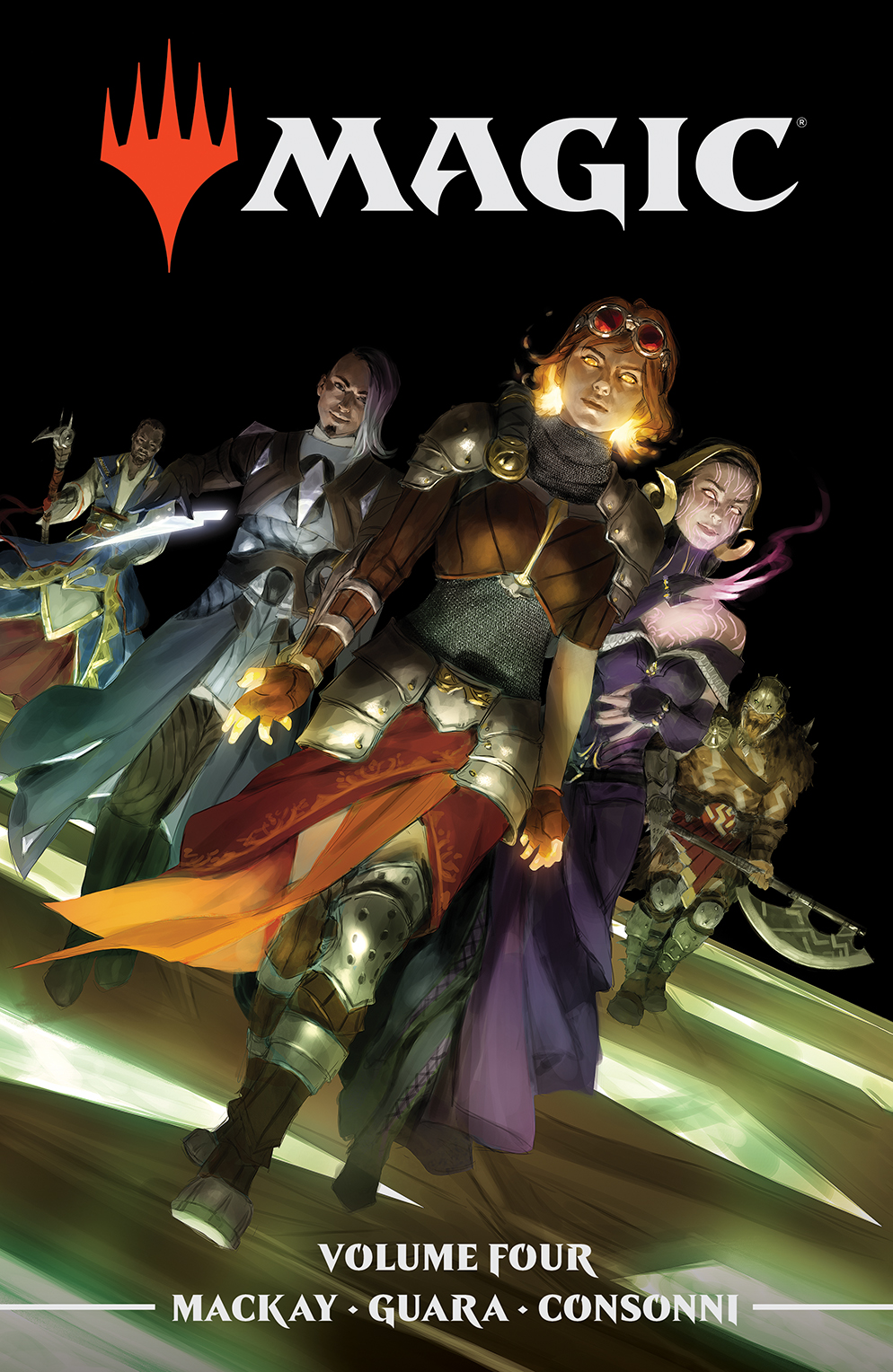
Boom! Studios will, Wednesday, release the latest volume in its ongoing Magic comic book series with the release of its fourth volume. Coming more than four months after the release of the series’ third volume, Magic: Volume Four continues the story of the latest group of Planeswalkers as they face the forces of evil. Their story here serves as the volume’s foundation and will be discussed shortly. The dialogue and art also play into the overall presentation in this story, and each will be discussed later in its own moment. Each item noted is important in its own way to the whole of the new entry. All things considered they make Magic: Volume Four an interesting new presentation from Boom! Studios.
Magic: Volume Four is an interesting new entry in Boom! Studios’ comic book series based on the card game Magic: The Gathering. Its interest comes in part through its story, which follows Garruk, Chandra, Jace and Niko working to free Kaya from the clutches of the megalomaniacal villain Tezzeret. The group’s story started in Magic: Volume Three as they tracked down Davriel Cane. Cane has made a deal with Tezzeret to get his own power, but after the group tracks him down and corners him in this latest volume, he helps the group find and stop Tezzeret while also freeing Kaya. There is lots of drama and exposition throughout the course of the story, which spans a total of 125 pages. The final page of the story sets up the beginning of Volume 5 following the conclusion of the story presented here as it introduces a new Planeswalker. Seeing Niko get overzealous in their search for Tezzeret and locating him, that climactic moment ensures the franchise’s most devoted readers will remain engaged throughout the course of the story. How Tezzeret is defeated is hinted early on in the story in this volume but will be left for audiences to discover for themselves. There is also some LGBTQ representation throughout the story for those readers who might be more liberal and progressive. Overall, the story proves an interesting presentation that readers will find worth reading at least once.
While the story at the center of Volume Four is key to its presentation, it is just one part of what makes the story interesting. The dialogue plays its own crucial part in the whole. Case in point is the early portion of the story when our heroes corner Cane and essentially offer him an ultimatum, either help them find and defeat Tezzeret or run and be hunted down again. There is something about that straight forward offering that is classic hero bravado used in so many comic books. Yes, it is a bit kitschy but still fun, even with the moment being serious. That is because it is such an action story staple for lack of better wording. On another note, Tezzeret’s boasting is just as grandiose when he finally faces off again against Niko, telling Niko, “You may have forced me to move up my timeline more than I would prefer, more than is ideal, but oh well. I shall just become a god a little earlier.” Such bombast is all too familiar from villains across the comic book universe but is just as fun to read here as in so many other comic books from villains in other titles. These moments of grandiosity work with the dialogue used in the story’s more serious moments to the end that the whole ensures audiences will remain engaged through the story’s words just as much as its action. Keeping that in mind, the story and dialogue collectively give audiences reason enough to read this volume.
The art that is exhibited throughout the story adds to its appeal in its own right, too. From the rich colors used in the battle scenes, the more subtle use of colors early on at Cane’s house and even the balance therein presented in other scenes, the coloring is so immersive in each cell. The characters’ designs hint at an almost anime style at some points throughout the story, and at a more American style at others. That is evidenced through the balance of the sometimes angular designs and other times, softer, more curved look in the scenes. That, together with the color balance used throughout the story, makes the book’s art just as interesting as the story and its dialogue. When all three elements are combined, the result is a presentation that Magic’s established audiences will find worth reading, even being as long as it is.
Boom! Studios’ brand new fourth volume of its Magic comic book series is a presentation that many audiences will find interesting. That is proven in part through its story, which completes the tale started in the franchise’s third volume. The latest group of Planeswalkers finally defeat Tezzeret and free the region from his evil rule. Along the way, they also free another Planeswalker that he had essentially kept hostage. The next volume is set up in the story’s epilogue, as it introduces another Planeswalker. The dialogue that is used throughout the story proves familiar to any comic book fan, what with its moments of bravado from the Planeswalkers and from Tezzeret. There are also familiar dramatic moments that audiences will find just as familiar, such as when Niko admits to his friends that they had acted brashly and blown the group’s cover, for lack of better wording. The overall dialogue offers its own reason for audiences to remain engaged and entertained throughout the course of the story, building on the foundation formed by the story. The artwork exhibited throughout the story rounds out its most important elements, what with its rich colors and their balance, and the equally interesting designs of the characters and the world in which they live. That final element works with the rest of the volume’s content to make the new volume a presentation that Magic’s established audiences are certain to appreciate.
Magic: Volume Four will release Wednesday. More information on this and other titles from Boom! Studios is available at:
Website: https://boom-studios.com
Facebook: https://www.facebook.com/BOOMStudiosComics
Twitter: https://twitter.com/boomstudios








